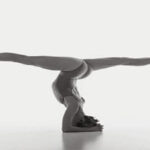Yoga Anatomy: Trade in Your Buns of Steel for Fluffy Butt
The gluteus maximus is not only the butt of many jokes, but also the largest and most superficial of the three gluteus maximus. It constitutes a large part of the shape and appearance of the buttocks. Its size is unique to mankind; No other mammal has such a vast rear area, as pointed out in the classic “Body Walk Guide”. Maybe that’s why it’s easy to laugh about it.
Putting aside all jokes, in order to keep healthy posture and happy lower back, it is very important for us to pay attention to this major muscle. When gluteus maximus is unhealthy, stuck or has a group of trigger points, it is possible to start a tug-of-war competition with lower back muscles, especially quadratus lumborum (QL).
Gluteus maximus is often called “sleeping giant” because it is probably the strongest muscle in the body, but it is usually weak and misused. Let’s get familiar with some details of gluteus maximus to understand why.
GM originated from the outer surface of ilium behind the gluteal major line, the posterior third of lumbar fascia of iliac crest, lateral mass of sacrum, ligament of sacrum tuberosity and coccyx. It is inserted into gluteus maximus and iliotibial tract of femur. Its most powerful action is to pull back the pelvis to make the body return to the upright position after bending over. In this action, it is helped by biceps femoris (long head), semitendinosus, semitendinosus and adductor muscle. The lower part of the muscle also acts as the adductor and supinator of the limb. The upper fibers burn upward to abduct the hip joint.
Therefore, the tight gluteus maximus will also produce too common “duck feet”, accompanied by extreme external rotation of buttocks. GM is very helpful when walking, standing or running, but when sitting too much, especially when its posture is not good, it will gradually lose its intonation. Or the modern lifestyle of sitting in a chair leads to the inhibition and delayed activation of gluteus muscles, which eventually leads to weakness. When GM is weak, hamstrings and lower back muscles must be compensated.
Just because a muscle is tight and short doesn’t mean it is strong. As a massage therapist in sports-oriented Colorado, I see many clients’ gluteus maximus muscles are too tight and sticky. Many nervous GMs are still weak because they have not been properly trained, or they have been occupied by the chair curse mentioned earlier. Even the strong and well-used gluteal muscles are often tied too tightly, which limits the best range of motion of the surrounding joints.

